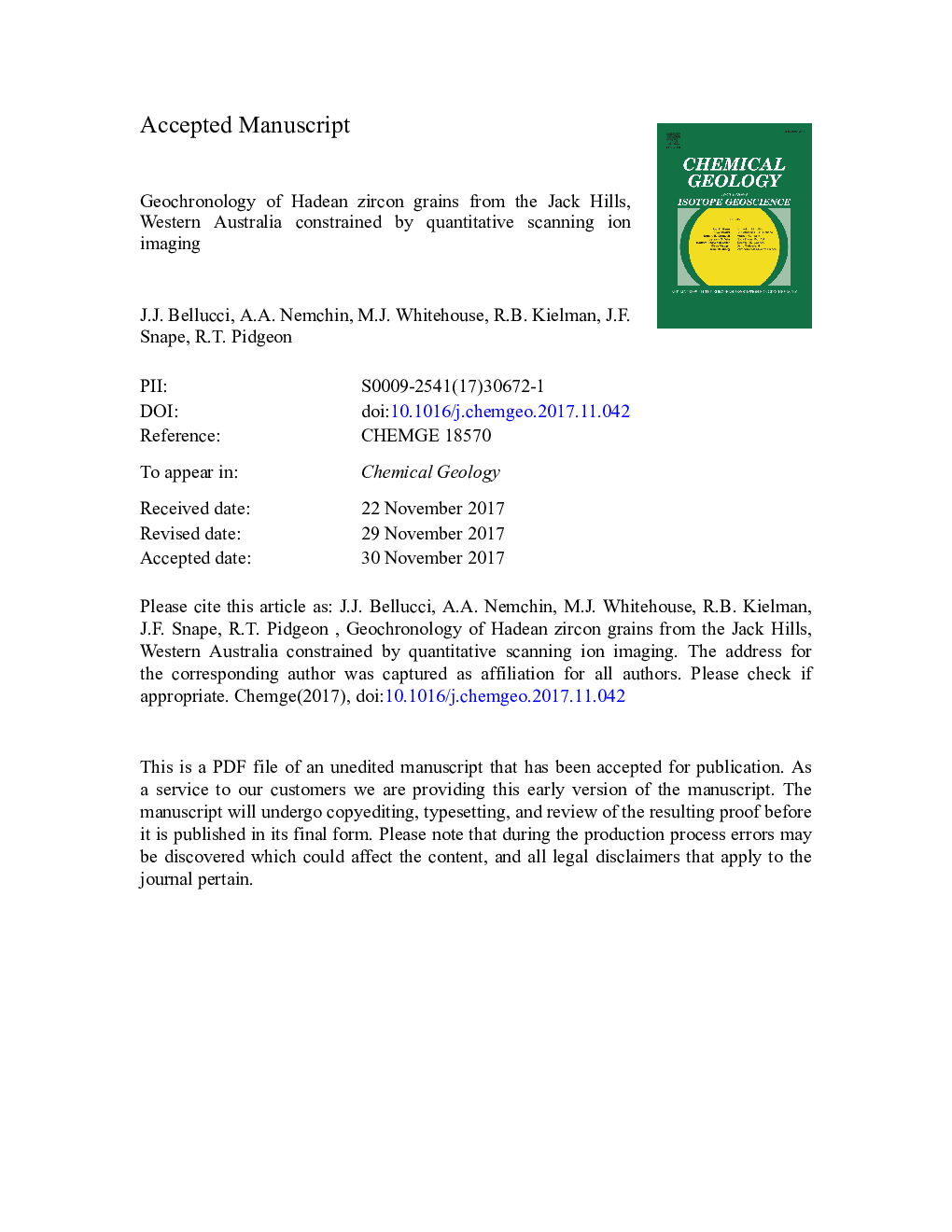| Article ID | Journal | Published Year | Pages | File Type |
|---|---|---|---|---|
| 8910490 | Chemical Geology | 2018 | 42 Pages |
Abstract
Five Hadean (> 4 Ga) aged zircon grains from the Jack Hills metasedimentary belt have been investigated by a secondary ion mass spectrometry scanning ion image technique. This technique has the ability to obtain accurate and precise full U-Pb systematics on a scale < 5 μm, as well as document the spatial distribution of U, Th and Pb. All five of the grains investigated here have complex cathodoluminescence patterns that correlate to different U, Th, and Pb concentration domains. The age determinations for these different chemical zones indicate multiple reworking events that are preserved in each grain and have affected the primary crystalized zircon on the scale of < 10 μm, smaller than conventional ion microprobe spot analyses. In comparison to the spot analyses performed on these grains, these new scanning ion images and age determinations indicate that almost half of the spot analyses have intersected several age and chemical domains in both fractured and unfractured parts of the individual crystals. Some of these unfractured, mixed domain spot analyses have concordant ages that are inaccurate. Thus, if the frequency of spot analyses intersecting mixed domains here is even close to representative of all other studies of the Jack Hills zircon population, it makes the interpretation of any trace element, Hf, or O isotopic data present in the literature tenuous. Lastly, all of the grains analysed here preserve at least two distinguishable 207Pb/206Pb ages. These ages are preserved in core-rim and/or complex internal textural relationships in unfractured domains. These secondary events took place at ca. 4.3, 4.2, 4.1, 4.0, 3.7, and 2.9 Ga, which are coincident with previously determined statistically robust age peaks present in this zircon population.
Related Topics
Physical Sciences and Engineering
Earth and Planetary Sciences
Geochemistry and Petrology
Authors
J.J. Bellucci, A.A. Nemchin, M.J. Whitehouse, R.B. Kielman, J.F. Snape, R.T. Pidgeon,
